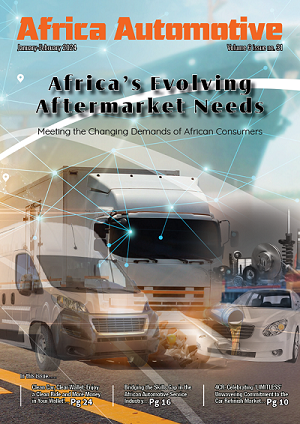After 2021 South Africa’s automotive industry growth is set to be bigger when government policy demanding more than 50% local content kicks in. Promising growth in demand by vehicle manufacturers for South African made automotive components cannot hide underlying challenges faced by the local components industry.
According to the National Association of Automotive Component and Allied Manufacturers (Naacam), South African component suppliers grew average rand sales by 10.7% in real terms between 2016 and 2018.
This is well ahead of vehicle production growth. The top 25% of suppliers grew sales by 16.5%. Average job numbers grew 3.5% over the period. Among leading companies, the figure for 2018 alone was 6.4%. Average supplier operating profits rose 6.2% in 2017 and 4.3% in 2018. Productivity also improved.
The problem with these positive numbers is that many of them lag behind growth rates in rival supplier industries in developed and developing markets. Put simply, these markets are improving faster than South Africa meaning local suppliers risk becoming less globally competitive.
That’s not good news in an industry where component-sourcing decisions are taken in Europe, Asia and the US.
Michael Sacke, CEO of Commercial Vehicle Manufacturer Isuzu SA, said: “We are all part of global ecosystems and purchasing decisions are made elsewhere, for the good of the group.”
Also concerning is that, according to the B&M report, fewer motor companies believe there are opportunities to increase purchases from current direct suppliers, or to commit to longer-term relationships. Despite this, Naacam Director Renai Moothilal said: “Opportunities exist in the areas of supplying more of current products, supplying additional products in the existing range, and supplying newly developed products.”
Some good news
The good news for South African suppliers is that, from 2021, the government automotive policy will require motor companies to increase the value of local content in their vehicles by at least 50%. The current industry average of 38% must reach 42% by 2023, then 60% by 2035.
Some in the industry want this target to be imposed individually on each vehicle manufacturer. “Why should I have to exceed 60% and drag up the average because someone else is lagging?” said one MD – but Sacke said the idea is not feasible for his company, which bought the Port Elizabeth vehicle assembly assets of General Motors when the US company divested at the end of 2017.
Isuzu SA, which produces bakkies and trucks, expects to build about 24 000 vehicles in 2019, the smallest number, by some distance, of South Africa’s seven major manufacturers.
“We simply don’t have the volumes that would make it feasible to undertake wholesale localisation,” Sacke said. “Realistically, we’ll never get local content above 30% to 40%.” He accepts this means Isuzu SA won’t receive some incentives from the updated Automotive Production and Development Programme (APDP).
However, he says the company has an important role to play in the economy.
“We employ 1 000 people in the assembly plant and another 4 000 in our dealer network. We support 430 service and component suppliers and spend billions of rand every year. We may be small in motor industry terms but we are a significant player in the economy, particularly in the Eastern Cape.”





